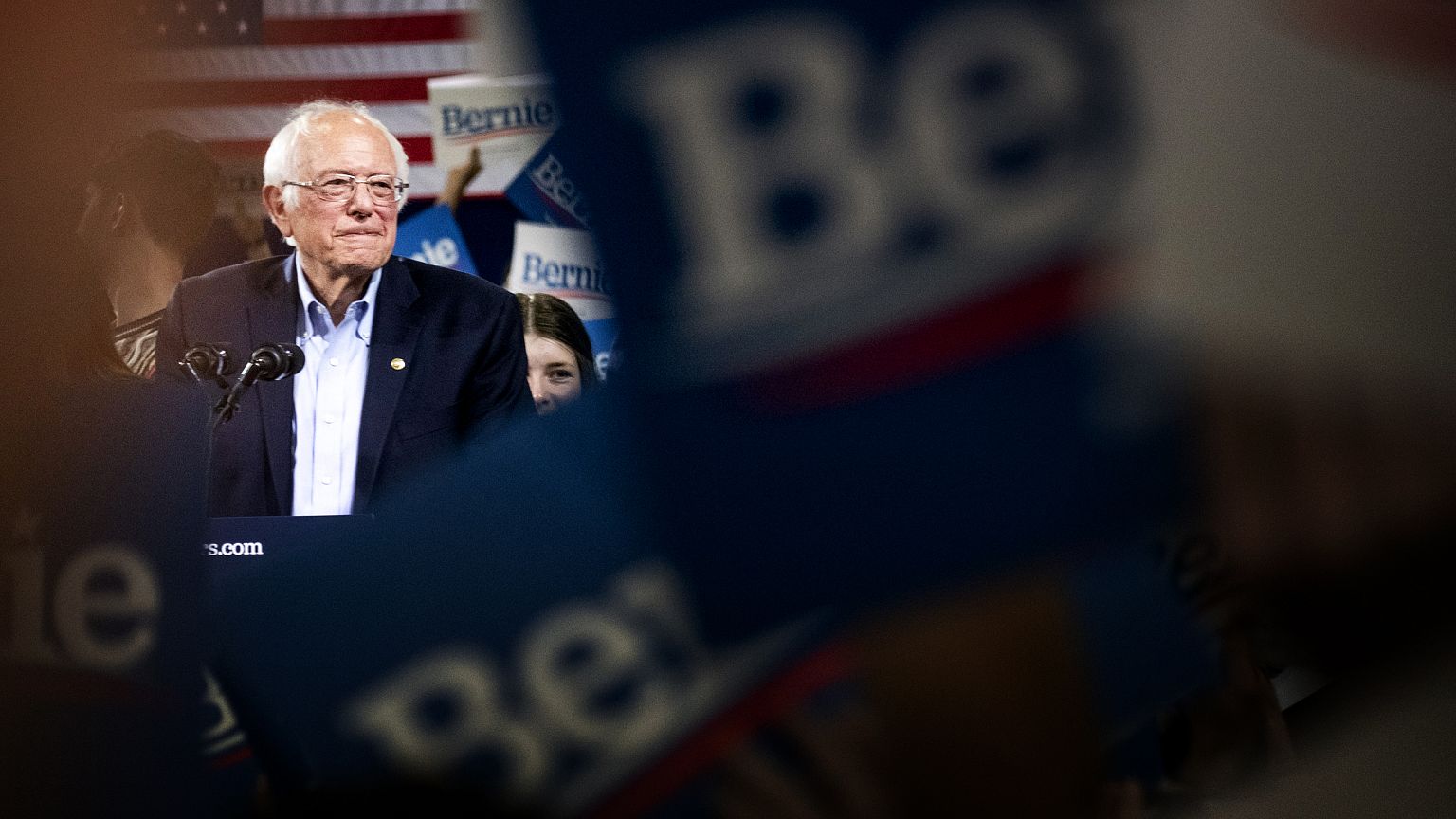Bernie Sanders has promised a sweeping agenda, but questions of cost continue to shadow his plans.
WASHINGTON — As the Democratic presidential candidate promising a political revolution, Sen. Bernie Sanders has proposed new federal programs to overhaul the nation's health care system, tackle climate change and wipe away student debt.
But a budget estimate by a nonpartisan think tank provided to NBC News suggests that despite new proposals on how he would pay for them, his plans would still result in a $20 trillion budget shortfall over 10 years.
NBC News asked the Committee for a Responsible Federal Budget to respond to an itemized list the campaign released last week explaining how the Sanders, I-Vt., intends to fund a range of his proposals, including "Medicare for All," the Green New Deal, free college and housing for all.
The $20 trillion estimate is similar to a study the CRFB did of Sanders' 2016 campaign, which estimated that his proposals then would result in a $19 trillion shortfall.
Sanders has proposed several ways to fund his ambitious plans, including a wealth tax to eliminate homelessness and fund universal child care, as well as an "income inequality tax" on large corporations and chief executives to eliminate $81 billion in past-due medical debt. And while he has acknowledged some middle-class tax increases will be required to fund his health care plan, a range of budget experts say they would likely need to be far higher than what he's proposed if he delivers on all of his promises.
Based on the calculations provided NBC News, the Committee for a Responsible Federal Budget found it would take an additional across-the-board 15 percent to 20 percent tax on wages or income to fully fund Sanders' proposals over 10 years.
Marc Goldwein, the committee's senior vice president, called Sanders' transparency about raising taxes to pay for his programs "commendable," but he said the levels Sanders has already proposed "only appear to cover three-fifths of the spending they are supposed to pay for."
"Covering this gap," Goldwein said, "would require the equivalent of more than doubling all payroll taxes or issuing more debt than the country has accumulated over its entire 244-year history."
Sanders' ambitious proposals stand in contrast to the policies advocated by former Vice President Joe Biden, the candidate he is now battling for the Democratic nomination. Whereas Sanders has proposed a full overhaul of the health care system, Biden has supported more measured proposals, like building on the Affordable Care Act.
Goldwein said that while his group hasn't "run all the numbers" on Biden's overall proposals, "it doesn't appear his plan will be more than a couple trillion short" of what he has proposed in terms of funding them.
On the other side, President Donald Trump, who promised as a candidate to eliminate the national debt in eight years, has instead overseen it as it has grown by $4.7 trillion through legislation he has signed, according to a past CRFB analysis.
Health care shortfall
The main source of the shortfall in Sanders' proposed spending comes from his "Medicare for All" health care plan, which would require far more federal spending than all of his other proposals. That alone would leave a $13 trillion hole in the federal budget, according to a previously published study from the CRFB.
By contrast, Biden's health care plan, financed through tax increases on capital gains, corporations and the wealthy, would result in an estimated $450 billion shortfall, that study found.
"Either there's going to be massively higher taxes, a massive reduction in the ambition of what he's proposing or a massive increase in the deficits and debts," Austan Goolsbee, who was chairman of President Barack Obama's economic council, said of Sanders' proposal. "It's got to be one of those three."
In defense of the cost of his health care plan, Sanders has repeatedly referred to a study by a Yale University epidemiologist who found that his plan would partly pay for itself by replacing thousands of competing private insurance plans with a more efficient Medicare program that would negotiate lower prices for care and operate with less overhead.
But that study has come under criticism from Washington budget experts, as it doesn't account for Sanders' proposed expansion of universal long-term care benefits, like assisted living and nursing care for an aging population, that are most likely to cost $4 trillion to $5 trillion. It has also been criticized for its assumptions about savings from sharp reductions in fraud and administrative costs.
"This study has been roundly criticized by experts on the left and right," said Brian Riedl, a senior fellow at the conservative Manhattan Institute in Washington.
A PolitiFact fact check found "mostly false" the study's claim that Medicare for All would lower overall health costs by $450 billion a year. "Many of the study's assumptions are flawed and experts uniformly told us it overestimates the potential savings," PolitiFact says.
The Sanders campaign didn't respond to a request for comment. But Robert Pollin, an economics professor at the University of Massachusetts, Amherst, who has informally advised the Sanders campaign on health care, said in an interview that middle-class households and businesses would pay less under Sanders' health care plan "for the simple reason the single-payer system is more efficient than what we have now."
The U.S. spends 18 percent of its gross domestic product on health care, compared with other advanced Western nations like Germany, which spends 11 percent.
Still, Pollin said, the transition to Medicare for All couldn't happen overnight given the disruptions it would cause across the health care system. He also forecast the loss of 1.8 million jobs related to the insurance industry.
"It's an argument for saying it shouldn't go so fast, and I hear that argument," said Pollin, who recommends a four-year bridge.
Download the NBC News app for breaking news and politics
Other proposals
The CRFB analysis also questions some of the assumptions Sanders makes in other ambitious proposals.
For instance, he says he would fund his plan for tuition-free public colleges, universities and trade schools with a "modest tax on Wall Street speculation." The campaign estimates such a tax would raise $2.4 trillion. But the CRFB points to an assessment by the nonpartisan Tax Policy Center, which estimates that the maximum that could be raised would be closer to $1 trillion, because higher tax rates would result in fewer Wall Street transactions.
The CRFB estimate doesn't fully account for the net cost of Sanders' proposed $16 trillion Green New Deal because many of its details weren't specific enough to evaluate. However, it does criticize its use of "dynamic scoring," a method Republicans have used to argue that tax cuts pay for themselves by generating new economic growth.
The Sanders campaign also cites research warning that climate change is expected to cause catastrophic economic losses in the long term, suggesting that investments now could pay huge savings down the line. It doesn't include those effects into its proposed savings, however.
And the campaign also says that ameliorating college, health care and child care costs would more than offset the higher tax rates.
The plan assumes its investments in clean energy would create 20 million jobs — a prediction the CRFB finds unlikely, given that many Americans finding jobs in these new sectors would be shifting from other jobs in private industry.















